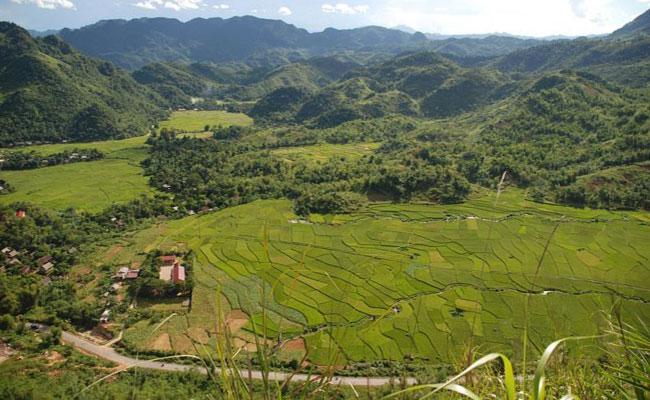Weighing Approaches to Reduce Land-Use Greenhouse Gas Emissions and Increase Carbon Storage in Ecosystems
Prioritizing options for reducing greenhouse gas emissions from land use based on ProLand’s insights from local experts and lessons learned

Tetra Tech’s Tim Holland wrote this piece to discuss how countries can best determine prioritizing options for greenhouse gas (GHG) emissions from land use.
This post was originally published on ClimateLinks.
Planners at the U.S. Agency for International Development (USAID) and in host country governments must choose how to invest funds to reduce GHG emissions from land. Should they focus on establishing or strengthening protected areas in the east? Restoring mangroves in the north? Improving timber harvesting practices in the south? In each country, there are many choices.
The Productive Landscapes (ProLand) project team has brought together data, past project experiences, and insight from local experts to help decision-makers, focused at a national level, prioritize among investment options for reducing GHG emissions from land. We call the approach Sustainable Landscapes Opportunities Analysis (SLOA). As of today, the ProLand team has completed draft and final SLOAs in Vietnam, Philippines, Guatemala, Papua New Guinea, and Ecuador, as well as a regional-scale SLOA for West Africa.
Human land use causes about 23 percent of total global GHG emissions. This includes emissions from activities related to agriculture, forestry, and the conversion or degradation of ecosystems like wetlands, forests, and grasslands. Such activities include forest clearing, cropland management, and livestock production. However, human land use emissions do not include emissions from transportation or energy production that are closely related to land management activities, such as transportation of lumber or production of nitrogen fertilizer.
Approaches to reducing these emissions range from expansion of agroforestry that increases carbon storage on farmlands, to forest protection that reduces emissions from deforestation, to improved practices for raising animals that reduce emissions from livestock.
In most countries, the top five or so opportunities usually represent the great majority of emissions reduction potential. Choosing from these options presents a daunting challenge.
How can donors like USAID and their government partners have a clear view of the range of possibilities and their likely impact when choosing approaches?
The analysis for each country starts with identifying potential opportunities for climate change mitigation. We rely on a pair of recent studies that broke new ground by bringing together more than 300 research articles in order to quantify the cost-effective emission reductions that 20 natural climate solutions pathways could deliver. We also refer to national climate change strategy documents to ensure that our analysis captures all the most promising opportunities in each country. Once we have identified potential approaches, we assess them on four counts:
- Magnitude: How many tons of emissions could an activity reduce, or by how many tons could it increase carbon storage?
- Cost: How much is an activity likely to cost in terms of dollars per ton?
- Feasibility: How likely is an activity to successfully achieve its goals once we take into account institutional factors, cultural preferences, economic dynamics, and local capacities?
- Co-benefits: What impact will an activity have on non-climate goals such as biodiversity conservation, human health, or livelihood improvement?
We’ve learned anyone using these analyses to prioritize among land-based climate mitigation approaches needs to have clarity about additional criteria for making these choices. Trying to achieve the greatest reduction in emissions for the least cost will lead to a different selection of approaches than would trying to create the greatest co-benefits to biodiversity or to local livelihoods.
The ProLand team also works with other practitioners so that we can all continue learning and improving these assessments. We recently hosted a virtual workshop to share lessons with other groups who are developing SLOAs: Colorado State University; the University of Vermont; the Conservative Group on International Agricultural Research’s Research Program on Climate Change, Agriculture and Food Security; the U.S. Department of Agriculture Foreign Agriculture Service; Conservation International; and the Nature Conservancy. Working with these groups and other partners helps us continuously improve SLOA so they can better support the design of landscape-wide solutions that limit climate change while improving the health and well-being of local populations.
Completed SLOAs and future reports, once completed, are available here.

